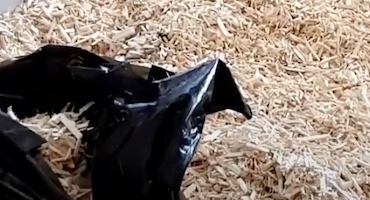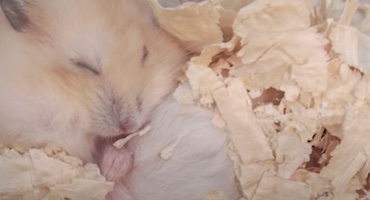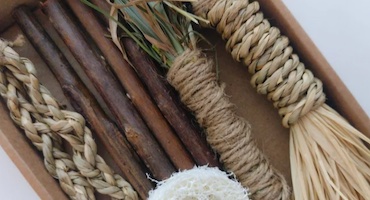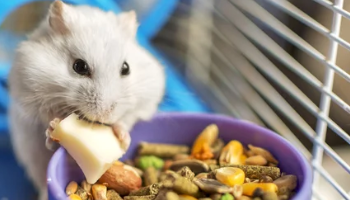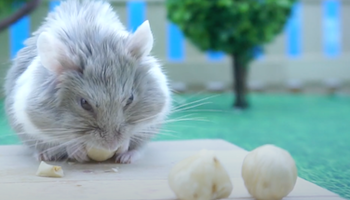Hamsters are lovely pets, especially for homes who cannot keep larger pets like cats or dogs. These little creatures love to play, sleep, and of course, eat! If you are wondering ‘can hamsters eat pine nuts,’ then the answer is yes, hamsters can eat pine nuts!
However, you should also note that pine nuts are high in sugar, phosphorous and acid content and also contain a little water in them. Pine nuts are not safe for certain species of hamsters, especially the smaller ones who are very susceptible to developing diabetes. You can only feed pine nuts to specific breeds of hamsters. Here is everything you need to know about feeding pine nuts to your hamsters.
Syrian hamsters are a larger species of hamsters which grow up to 6 to 7 inches in size. These hamsters can digest small amounts of sugar in their diet. However, they can only do so in moderation. If you want to feed pine nuts to your Syrian hamster, you can give them one or two pieces of pine nuts once in 10 days.
Campbell’s Dwarf hamsters are the smaller species of hamsters, about half the size of Syrian hamsters! These hamsters are also very prone to developing diabetes and obesity, and cannot digest much sugar in their diet. Since pine nuts contain a lot of sugar content, it is absolutely not safe for your Campbell’s Dwarf hamsters. Avoid feeding pine nuts to these little dwarf hamsters.
Winter White’s Dwarf hamsters are also another species of smaller, dwarf hamsters, which means that these hamsters also cannot digest very sugary or acidic foods. Feeding pine nuts to these tiny hamsters can be quite harmful to them, so you should altogether avoid feeding pine nuts to these little hamsters.
Robowski hamsters are like Syrian hamsters; they are larger, more robust, and can digest small amounts of sugar, phosphorous and acidic foods. However, if you want to feed pine nuts to your Robowski hamsters, you should only give them one or two pieces of pine nuts just once in 10 days.
Chinese hamsters are a species of dwarf hamsters, which obviously means that they are far more susceptible to developing diabetes and obesity from high fat and sugary diet. You should altogether avoid feeding your Chinese hamsters any pine nuts, as the high sugar and fat content in these nuts can be very harmful to their health.
There are many wild hamster species which survive in many parts of the world, other than these domestic hamster breeds. These wild hamsters are scavengers, so they hunt and pick their foods as they can find them. It does not allow them to have a very healthy or balanced diet in the wild. Here, they mainly survive on wild fruits and berries, nuts, seeds, vegetables, plants, leaves, and grains. However, these hamsters are also omnivorous, so they also eat small insects, lizards, and frogs if they can find them.
Domestic hamsters have a far more balanced and healthy diet, consisting of exceptional hamster food you find in pet stores. Other than this regular diet, you can also feed your pet hamsters the occasional treats such as nuts, little pieces of fruits, vegetables, leaves, seeds, and grains.
Are there any health benefits to your hamsters eating pine nuts?
Well, it depends upon the species of hamsters you have. If you have Syrian or Robowski hamsters, they can eat pine nuts in moderation. However, for your dwarf hamster species, it is hazardous for their health, so avoid feeding them pine nuts.
Pine nuts have Vitamin E, Vitamin K, calcium, iron and manganese in abundance.
Vitamin E is excellent for boosting the immunity of your hamsters, as well as promoting their eye and skin health.
Vitamin K is significant as it plays a vital role in bone metabolism, blood clotting, and also in regulating the calcium levels in your hamster’s body.
Calcium is right for your hamsters as it helps in building as well as maintaining healthy bones and muscles for your hamsters. It can also prevent high blood pressure and diabetes in your little pets.
Iron helps in boosting the levels of hemoglobin in your hamster’s body. It also prevents anemia and boosts the immunity of your hamsters.
Finally, manganese found in pine nuts is high for improving the bone health of your hamsters. It is also an excellent antioxidant, so it helps your hamster’s body to get rid of free radicals and toxins and makes them stronger and healthier.
What are the risks to your hamsters eating pine nuts?
Pine nuts are full of phosphorous, sugar, acidic content, water content, and even fat. Since your little hamsters are very prone to developing diabetes and obesity, pine nuts in excess can be very harmful to their health. It is best to avoid altogether feeding pine nuts to your dwarf hamsters. However, you can give your Syrian and Robowski hamsters pine nuts as an occasional treat.
Can hamsters eat dried pine nuts?
As for your Syrian and Robowski hamsters, yes, they can eat dried pine nuts. However, avoid feeding any form of pine nuts to your Campbell’s dwarf hamsters, Winter White’s dwarf hamsters, and Chinese hamsters, as the sugar content is way too much for them to digest.
Can hamsters eat pine nut shells?
No, you should absolutely not give pine nut shells to your hamsters. Remove the nutshell first and then feed the pine nuts to your Syrian and Robowski hamsters. Also, you should ensure that the pine nuts are fresh and do not have any added salt in them. If they do, avoid feeding it to your hamsters and only look for raw, unsalted and unflavoured pine nuts.
How much pine nuts can hamsters eat?
Your Dwarf hamster species cannot digest any amount of pine nuts, so you should altogether avoid feeding them this nut. As for your Syrian and Robowski hamsters, you can feed them one or two pieces of unsalted pine nuts just once in ten days, as an occasional treat.
Conclusion
Due to the high sugar, phosphorous, and water content in pine nuts, they are an occasional excellent treat for your hamsters, but you should not make it a part of their regular diet. Avoid feeding pine nuts to your dwarf hamsters ultimately. Give your hamsters healthy regular foods such as individual hamsters food and these occasional safe foods as treats.
Share
Related Posts
Most pet owners often wonder what the safe foods for their hamsters are and which ones can be [...]
Humans and hamsters are both quite fond of eating nuts. These tasty and nutritious treats can be [...]
Pet hamsters are an incredible bundle of joy for their pet owners. When it comes to feeding them [...]

